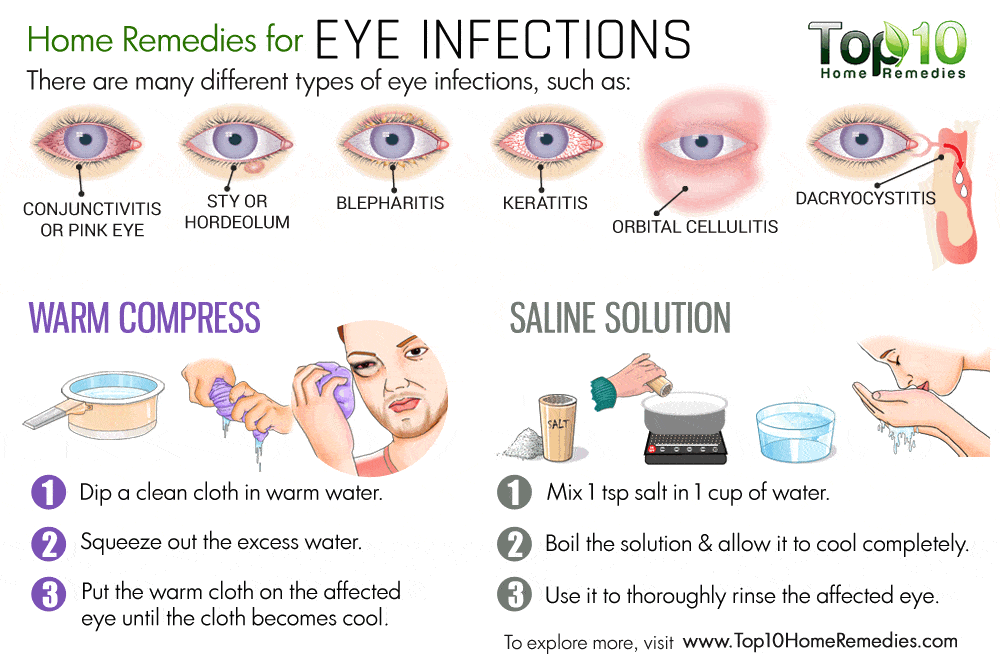What to do when you have a swollen eyelid. A Comprehensive Guide to Swollen Eyelid: Causes, Treatments, and Prevention
What to do when you have a swollen eyelid? Explore the causes, treatments, and prevention tips for various conditions like stye, chalazion, allergies, and more. Get the answers to your questions about swollen eyelid.
Causes of a Swollen Eyelid
A swollen eyelid can have a variety of causes, ranging from minor infections to more serious underlying health conditions. Let’s explore some of the common causes:
Stye (Hordeolum)
A stye is an infection of a gland in the eyelid, causing a small, red, and painful bump. Symptoms include swelling, pain, a feeling of scratching, and a small spot of pus. Styes usually resolve on their own within 1-2 weeks, but in some cases, a doctor may prescribe antibiotics.
Chalazion
A chalazion is a lump in the eyelid caused by a clogged oil gland. It can appear similar to a stye but is not an infection. Symptoms include swelling, redness, a hard lump, and sometimes tenderness. Chalazia often resolve on their own, but treatment options include warm compresses, anti-inflammatory eye drops, and in some cases, steroid injections or minor surgery.

Allergic Reaction
Allergies to dust, pollen, and other common allergens can cause eye irritation and swelling. Symptoms include swelling, itching, redness, watery eyes, and a stuffy or runny nose. Managing allergy symptoms may involve using cool compresses, taking antihistamines, and using over-the-counter or prescription eye drops.
Infections
Infections such as pink eye (conjunctivitis) or blepharitis (inflammation of the eyelid) can also lead to a swollen eyelid. These conditions may require antibiotic or anti-inflammatory treatment.
Health Conditions
Certain underlying health conditions, such as Graves’ disease (an autoimmune disorder) or liver failure, can also cause swelling in the eyelids. In these cases, treating the underlying condition is crucial.
Symptoms of a Swollen Eyelid
The symptoms of a swollen eyelid can vary depending on the underlying cause. Common symptoms include:
- Swelling
- Pain
- Redness
- Itching or burning
- Discharge or crusting
- Blurry vision
- Sensitivity to light
Treating a Swollen Eyelid
The treatment for a swollen eyelid will depend on the underlying cause. Here are some general treatment options:

Home Remedies
For minor conditions like styes or chalazia, home remedies can be effective. These include applying warm compresses, avoiding eye makeup and contact lenses, and taking over-the-counter pain medication.
Medications
Prescription eye drops or ointments, such as antibiotics or anti-inflammatory medications, may be necessary to treat infections or allergic reactions. In some cases, oral medications like antihistamines or steroids may be prescribed.
Surgery
For persistent or recurring chalazia, minor surgery to drain the blocked gland may be required. This is typically done by an ophthalmologist.
Preventing a Swollen Eyelid
While it’s not always possible to prevent a swollen eyelid, there are some steps you can take to reduce the risk:
Proper Eye Hygiene
Regularly cleaning the eyelids, removing eye makeup before bed, and avoiding touching or rubbing the eyes can help prevent infections and irritations.
Allergen Avoidance
For those with allergies, monitoring pollen counts, wearing protective eyewear, and taking preventive medication can help minimize allergy-related swelling.

Addressing Underlying Conditions
If a swollen eyelid is related to an underlying health condition, such as Graves’ disease or liver disease, managing that condition is crucial for preventing recurrent eyelid swelling.
When to Seek Medical Attention
If a swollen eyelid persists for more than a few days, or is accompanied by severe symptoms like fever, vision changes, or difficulty opening the eye, it’s important to seek medical attention. An ophthalmologist or other healthcare provider can properly diagnose the underlying cause and provide appropriate treatment.
Conclusion
A swollen eyelid can be a source of discomfort and concern, but understanding the potential causes and proper treatment options can help you manage the condition effectively. By practicing good eye hygiene, avoiding allergens, and seeking medical attention when necessary, you can minimize the impact of a swollen eyelid and maintain healthy eyes.
Causes, treatments, pictures, and prevention
A swollen eyelid can happen for many reasons. It can indicate an infection or other problem that needs medical attention. Treatment options will depend on the cause.
Possible causes include:
- a stye or chalazion
- an allergy
- an infection, such as pink eye or blepharitis
- a health condition, such as Graves disease or liver failure
- a blocked tear duct
In this article, learn more about these and some other causes of a swollen eyelid, and get some tips on how to treat and prevent each cause.
The following pictures may help identify some causes of a swollen eyelid. Below is more information about 13 different causes.
A stye (hordeolum) is an infection of a gland in the eyelid. It is like a small abscess.
Symptoms affect the rim of the eye, often by the root of an eyelash.
A person may notice:
- swelling
- pain
- a feeling of scratchiness
- a red bump like a pimple, usually with a small spot of pus in the middle
- crusting due to discharge
Treatment
A stye often needs no treatment. It will usually resolve on its own in 1–2 weeks.
It will usually resolve on its own in 1–2 weeks.
Here are some tips for managing at home:
- Apply warm compresses for 5–10 minutes, three to four times a day to relieve pain.
- Avoid eye products, including makeup and eye creams, until the stye disappears.
- Avoid wearing contact lenses until the stye goes.
- Use pain relief medication if necessary, such as ibuprofen.
- Never pop a stye as this can spread the infection and damage the eye.
A doctor may prescribe antibiotics.
Prevention
It is not always possible to prevent a stye, but the following tips may help:
- Remove all makeup and wash the face before going to sleep.
- Avoid sharing personal items, such as towels, with someone who has a stye.
- Avoid rubbing or touching the eyes.
- If a person needs to put in contact lenses or touch their eyes, they should wash their hands first.
A chalazion forms a lump in the eyelid. It can look like a stye, but it is not an infection.
It happens when an oil gland in the eyelid gets clogged, and oil accumulates behind the blockage.
It feels like a hard lump. A person may also notice:
- swelling, which may affect a whole eyelid
- redness, in some cases
- a hard lump
- tenderness, in some cases
- blurry vision
A person may have more than one chalazion, known as chalazia, and the bumps can grow quite large. They usually resolve on their own after several days or weeks.
People with blepharitis or rosacea may be more prone to chalazia.
Treatment
Options include:
- applying warm compresses for 10–15 minutes three to five times a day to relieve discomfort and encourage the chalazion to drain
- using anti-inflammatory eye drops
- having steroid injections, in some cases
- minor surgery may be necessary to drain a chalazion
If the bump does not go away after a few days or there are other signs of an infection, such as a fever, a person should contact an eye doctor.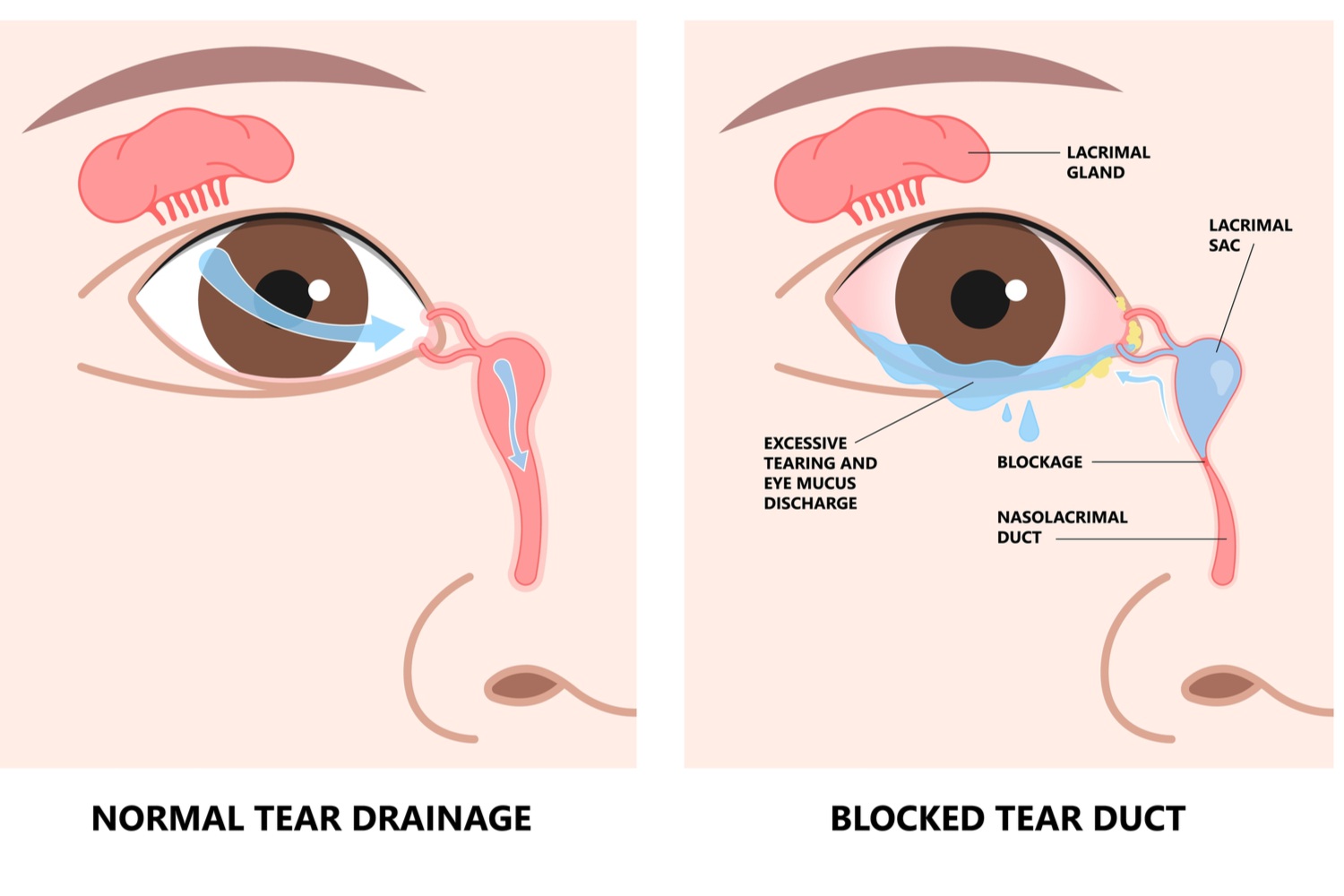
Prevention
A person cannot always avoid chalazia, but they can try:
- cleansing the eyelids daily with baby shampoo or eyelid cleansing wipes
- taking an omega-3 or flaxseed supplement
- asking a doctor about topical or oral antibiotics if chalazia occur often
An allergic reaction to dust, pollen, and other common allergens can cause eye irritation and swelling.
Symptoms include:
- swelling
- itching and burning
- redness
- watery eyes
- a stuffy or runny nose
- sneezing
Treatment
Ways of managing symptoms include:
- applying cool compresses to relieve itching and swelling
- taking antihistamines, such as diphenhydramine (Benadryl)
- using over-the-counter eye drops to reduce dryness and itchiness
- oral prescription medication and eye drops
Prevention
The best way to prevent a reaction is to avoid exposure to known allergens.
People with a seasonal allergy can:
- monitor pollen counts
- wear glasses to prevent contact with pollen
- stay indoors, when possible, when pollen is high
- ask a doctor about allergy shots and other preventive medication
A person with a known allergy should carry an autoinjector in case of a severe reaction. Severe swelling and breathing problems may be signs of anaphylaxis, a life threatening condition that needs emergency medical care.
Severe swelling and breathing problems may be signs of anaphylaxis, a life threatening condition that needs emergency medical care.
Anaphylaxis is a severe allergic reaction that can be life threatening. The symptoms develop suddenly and include:
- hives
- swelling of the face or mouth
- wheezing
- fast, shallow breathing
- a fast heart rate
- clammy skin
- anxiety or confusion
- dizziness
- vomiting
- blue or white lips
- fainting or loss of consciousness
If someone has these symptoms:
- Check whether they are carrying an epinephrine pen. If they are, follow the instructions on the side of the pen to use it.
- Dial 911 or the number of the nearest emergency department.
- Lay the person down from a standing position. If they have vomited, turn them onto their side.
- Stay with them until the emergency services arrive.
Some people may need more than one epinephrine injection. If the symptoms do not improve in 5–15 minutes, or they come back, use a second pen if the person has one.
If the symptoms do not improve in 5–15 minutes, or they come back, use a second pen if the person has one.
Was this helpful?
A person may have “bags under the eyes” for many reasons, including genetic factors. However, a lack of sleep and fatigue can make them appear more pronounced.
Treatment
Applying a cold compress while sitting upright may help relieve symptoms.
Prevention
The following tips may help prevent puffy eyes after sleeping:
- getting enough sleep
- sleeping with the head slightly raised
- limiting salt intake in the diet
- avoiding drinking liquids before sleeping
- quitting or avoiding smoking
Water retention overnight can also affect the eyelids. It can make them look swollen and puffy in the morning, particularly after not sleeping well.
Peripheral edema happens when the body is unable to remove fluid from parts of the body such as the hands, feet, and eyelids. Periorbital edema is when fluid collects around the eyes.
It can be a sign of many health conditions, such as:
- thyroid problems
- kidney or liver disease
- heart failure
- obstructive sleep apnea
- lymphedema
- the use of some drugs
Anyone who has concerned about fluid retention in the eyelids or elsewhere should seek medical advice.
Treatment
Treatment will depend on the cause but may include diuretics, pills that help the body remove fluid.
Prevention
It is not always possible to prevent fluid retention, but here are some ways of reducing the risk of heart disease and other conditions that can cause it:
- following a varied diet with plenty of fruits and vegetables
- limiting salt intake
- having regular exercise
- seeking medical help if symptoms arise that could indicate a problem
- following a doctor’s advice on treatment
Crying can lead to puffiness around the eyes.
The eyes produce tears:
- to lubricate the cornea
- to wash away irritants, for example, dust or onion fumes
- in response to emotional triggers, such as joy or sadness
If the person produces a lot of tears, the lacrimal drainage system, which usually absorbs them, may be unable to cope. This can lead to puffiness.
This can lead to puffiness.
Treatment
A cool compress may help soothe discomfort after crying.
Prevention
If a person finds they are crying more than usual or if crying or sadness is affecting their daily life, they may wish to seek medical advice.
Counseling can help manage depression, grief, anxiety, and other emotional factors that can lead to crying.
Here, learn more about puffy eyes from crying and what to do if they happen.
Makeup and skin care products can cause irritation, swelling, and puffiness in the eyelids for many reasons, for instance, if:
- they contain allergens or irritants
- the person does not remove them before sleeping
- products are not suitable for use around the eyes
- bacteria have developed over time, for example, on mascara
Treatment
Artificial tears can help soothe discomfort, if swelling occurs when using cosmetics.
A person should seek medical advice if symptoms continue or worsen.
Prevention
To prevent inflammation due to cosmetics, a person should:
- take care to avoid contact between makeup and the eyes
- monitor for sensitivity reactions and introduce new products one at a time
- remove all makeup before sleeping
- choose good quality makeup that is fragrance-free
- replace all eye makeup every 3 months
- avoid sharing products with other people
What is toxic makeup?
Orbital cellulitis is a serious infection that occurs in the bony eye socket, known as the orbit. The most common cause is a bacterial infection of the nasal and sinus passages, or rhinosinusitis. But, it can result from surgery, an immune problem, and other causes.
It can lead to:
- swelling
- redness
- pain, especially with eye movement
- paralysis of the muscles that control the eye
It is essential to seek medical help as soon as symptoms appear. Complications include abscesses, vision loss, and a spread of infection to other areas.![]()
Treatment
A doctor will prescribe antibiotics, possibly for 2–3 weeks or longer.
If an abscess develops and causes severe symptoms, a person may need surgery.
Prevention
People can reduce the risk of severe bacterial infections and their complications by:
- washing their hands regularly
- staying away from other people who have an infection
- seeking help as soon as the symptoms of infection appear, such as a fever
Graves’ disease is an autoimmune disorder that affects the thyroid gland. It can impact the skin, the eyes, and other organs.
Eye symptoms include:
- swollen eyelids
- eye pain
- redness in the conjunctiva
- double vision
- eyelid retraction, where it seems that the eyelids are pulled back
Treatment
Treatment for eye problems related to Graves’ disease will depend on the severity.
They include:
- oral steroids
- other medications, such as rituximab, a monoclonal antibody
- artificial tears
- focal radiation therapy for the eye socket
- surgery, in some cases
Prevention
Factors that may increase the risk of Graves’ disease are:
- a family history of the disease
- smoking
- stress
- infection
- exposure to iodine
- having given birth
- receiving highly active antiretroviral therapy, a treatment for some immune conditions
Quitting smoking may help reduce the risk.
There are many types of herpes virus, and some can cause infections in the eye. Ocular herpes simplex can lead to various eye infections with a range of symptoms.
These can affect the eyelids and other parts of the eye and include:
- irritation and redness
- inflammation of the cornea, the outer cover of the eye
- ulcers of the conjunctiva and cornea
- loss of sensation in the cornea
An initial infection often occurs in children under 5 years of age, but the virus remains in the body and symptoms can recur later.
Treatment
A doctor will take an eye swab to check for the herpes virus.
They may prescribe:
- eyedrops containing antibiotics, steroids, or both
- intravenous medication, in some cases
- lubricating eye drops to help manage dry eye
- antiretroviral therapy to prevent recurrences and complications
- surgery, in some cases
Prevention
The herpes simplex virus is very common, and infection is hard to prevent.
Adults can help protect newborns by avoiding kissing them on the mouth.
Some people may need long-term antiretroviral drugs to manage the virus and help prevent a recurrence.
Blepharitis is an inflammation of the margins of the eyelids. It can result from a bacterial or viral infection or exposure to an allergen. Some people experience it only once, but it is usually a long-term condition in which symptoms improve and then flare up again.
Blepharitis can affect the eyelids in the following ways:
- inflammation
- burning
- itching
- crusting
- ulceration, in some cases
- dandruff-like flakes around their eyelashes
- blurred vision
- feeling that something is in the eye
- loss of eyelashes
Treatment
A person should do the following two to four times per day during a flare to keep the eyelids clean:
- Apply warm, wet compresses to the eyes for 5–10 minutes to soften debris and dilate the oil glands that line the eyelids.

- Wash the eyelid margins gently with a cotton bud soaked in water with a little baby shampoo.
- Gently massage the eyelids, making circular movements with a cotton bud or fingertip, to stimulate the oil glands.
A doctor may also recommend:
- antibiotic cream to apply to the eyelid
- topical steroids
- a tea tree oil eyelid scrub
- newer therapies, such as pulsation therapy, which uses heat to help remove debris from the oil glands
Prevention
It is not always possible to avoid blepharitis.
Options include:
- avoiding triggers that cause or worsen symptoms
- limiting the use of makeup
- regularly carrying out the hygiene steps above to prevent recurrence in people with chronic blepharitis
When a tear duct is blocked, the eye cannot fully drain tears. According to the American Academy of Ophthalmology, 20% of newborns have a blocked tear duct, but it usually resolves in 4–6 months. In adults, it may stem from an infection, tumor, injury, or other cause.
In adults, it may stem from an infection, tumor, injury, or other cause.
Symptoms include:
- inflammation, especially in the inner corner of the eye
- discharge
- crusty eyelashes
- blurred vision
- traces of blood in tears
- a fever
- frequent infections
Treatment
Often, a blocked duct will open without intervention.
For a newborn, a doctor may teach a caregiver how to do a special massage to encourage the duct to open.
If the duct does not open, a brief duct probing procedure may be necessary to restore drainage.
Prevention
It is not possible to prevent a blocked tear duct. However, if symptoms worsen or there are signs of an infection, such as a fever, they should seek medical help.
Conjunctivitis, or pink eye, is an inflammation of the conjunctiva. This is the clear, thin tissue that lines the eyelid and eyeball.
Possible causes include:
- a viral, bacterial, or fungal infection
- an allergic or sensitivity reaction
- exposure to toxins or irritants
A person may notice:
- swollen eyelids
- a pink or red eyeball
- itching
- pain
- discharge
Treatment
Conjunctivitis usually resolves in 1–2 weeks but may take longer. Some people have chronic conjunctivitis, which lasts longer than 4 weeks.
Some people have chronic conjunctivitis, which lasts longer than 4 weeks.
Tips for managing pink eye at home include:
- applying cold compresses to relieve discomfort
- using artificial tears
- keeping the eye clean and free of makeup
- avoiding rubbing or touching the eye
- washing the hands frequently to prevent the spread of the infection
The person should see a doctor if:
- symptoms get worse
- the pain becomes severe
- pink eye does not clear up in 2 weeks
The doctor may prescribe:
- antibiotic drops or ointments, in the case of a bacterial infection
- antiviral therapy, in some cases
- topical antihistamines, if it is due to an allergy or irritant
Prevention
Here are some tips for preventing conjunctivitis and other eye infections:
- avoiding touching the eyes, and washing the hands first if it is necessary
- replacing all eye makeup after 3 months
- avoiding sharing makeup and personal items, such as towels, with other people
Here are some questions people often ask about a swollen eyelid.
When should a person see a doctor for a swollen eyelid?
People should see a doctor if they have a fever or signs of an infection, if there is pain when shifting eye gaze, if symptoms are severe or worsening, if symptoms persist longer than 48-72 hours, or if their vision has changed.
How do you treat a swollen eyelid?
The treatment will depend on the cause. A doctor can advise on a suitable approach.
Is a warm or cold compress better?
In some cases, such as after crying or having an allergic reaction, a cool compress wrapped in a cloth may help reduce swelling. Other conditions, such as a chalazion, may benefit from a warm compress.
A swollen eyelid can happen for many reasons, ranging from tiredness to an infection. If symptoms are severe, persistent, or could indicate an infection, the person should seek medical help.
Some eye conditions can lead to severe complications, including vision loss.
If a person is unsure, they should never hesitate to seek medical consultation to protect their health.
Read the article in Spanish
Causes, treatments, pictures, and prevention
A swollen eyelid can happen for many reasons. It can indicate an infection or other problem that needs medical attention. Treatment options will depend on the cause.
Possible causes include:
- a stye or chalazion
- an allergy
- an infection, such as pink eye or blepharitis
- a health condition, such as Graves disease or liver failure
- a blocked tear duct
In this article, learn more about these and some other causes of a swollen eyelid, and get some tips on how to treat and prevent each cause.
The following pictures may help identify some causes of a swollen eyelid. Below is more information about 13 different causes.
A stye (hordeolum) is an infection of a gland in the eyelid. It is like a small abscess.
Symptoms affect the rim of the eye, often by the root of an eyelash.
A person may notice:
- swelling
- pain
- a feeling of scratchiness
- a red bump like a pimple, usually with a small spot of pus in the middle
- crusting due to discharge
Treatment
A stye often needs no treatment.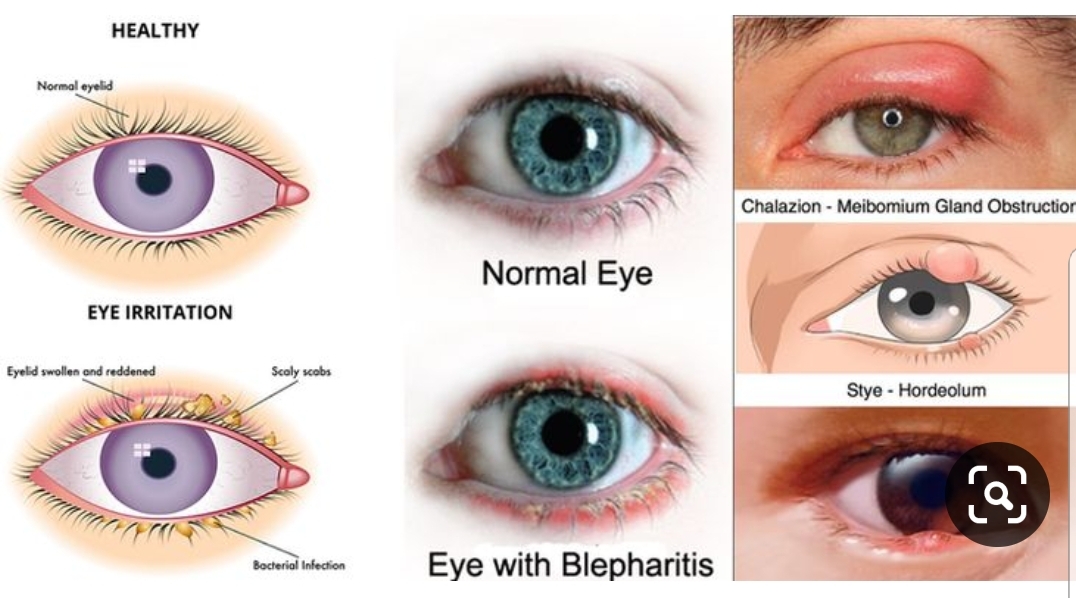 It will usually resolve on its own in 1–2 weeks.
It will usually resolve on its own in 1–2 weeks.
Here are some tips for managing at home:
- Apply warm compresses for 5–10 minutes, three to four times a day to relieve pain.
- Avoid eye products, including makeup and eye creams, until the stye disappears.
- Avoid wearing contact lenses until the stye goes.
- Use pain relief medication if necessary, such as ibuprofen.
- Never pop a stye as this can spread the infection and damage the eye.
A doctor may prescribe antibiotics.
Prevention
It is not always possible to prevent a stye, but the following tips may help:
- Remove all makeup and wash the face before going to sleep.
- Avoid sharing personal items, such as towels, with someone who has a stye.
- Avoid rubbing or touching the eyes.
- If a person needs to put in contact lenses or touch their eyes, they should wash their hands first.
A chalazion forms a lump in the eyelid. It can look like a stye, but it is not an infection.
It happens when an oil gland in the eyelid gets clogged, and oil accumulates behind the blockage.
It feels like a hard lump. A person may also notice:
- swelling, which may affect a whole eyelid
- redness, in some cases
- a hard lump
- tenderness, in some cases
- blurry vision
A person may have more than one chalazion, known as chalazia, and the bumps can grow quite large. They usually resolve on their own after several days or weeks.
People with blepharitis or rosacea may be more prone to chalazia.
Treatment
Options include:
- applying warm compresses for 10–15 minutes three to five times a day to relieve discomfort and encourage the chalazion to drain
- using anti-inflammatory eye drops
- having steroid injections, in some cases
- minor surgery may be necessary to drain a chalazion
If the bump does not go away after a few days or there are other signs of an infection, such as a fever, a person should contact an eye doctor.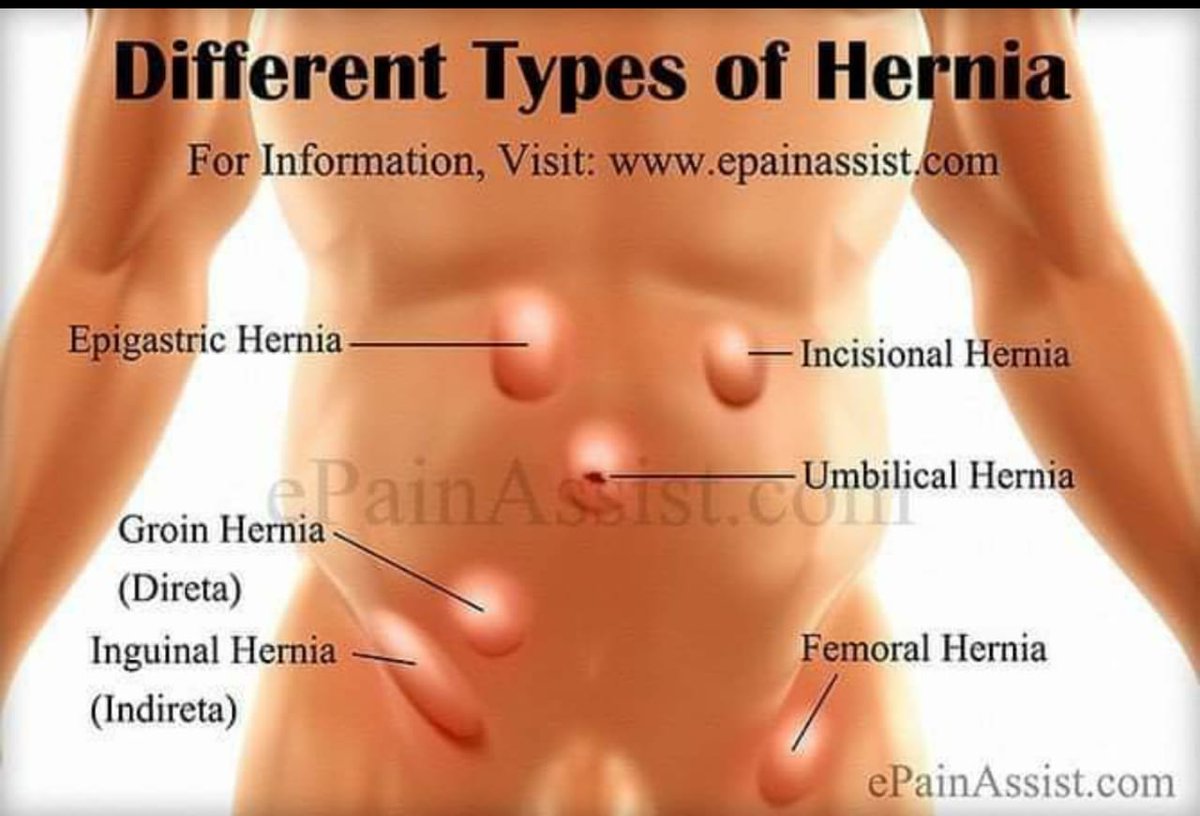
Prevention
A person cannot always avoid chalazia, but they can try:
- cleansing the eyelids daily with baby shampoo or eyelid cleansing wipes
- taking an omega-3 or flaxseed supplement
- asking a doctor about topical or oral antibiotics if chalazia occur often
An allergic reaction to dust, pollen, and other common allergens can cause eye irritation and swelling.
Symptoms include:
- swelling
- itching and burning
- redness
- watery eyes
- a stuffy or runny nose
- sneezing
Treatment
Ways of managing symptoms include:
- applying cool compresses to relieve itching and swelling
- taking antihistamines, such as diphenhydramine (Benadryl)
- using over-the-counter eye drops to reduce dryness and itchiness
- oral prescription medication and eye drops
Prevention
The best way to prevent a reaction is to avoid exposure to known allergens.
People with a seasonal allergy can:
- monitor pollen counts
- wear glasses to prevent contact with pollen
- stay indoors, when possible, when pollen is high
- ask a doctor about allergy shots and other preventive medication
A person with a known allergy should carry an autoinjector in case of a severe reaction.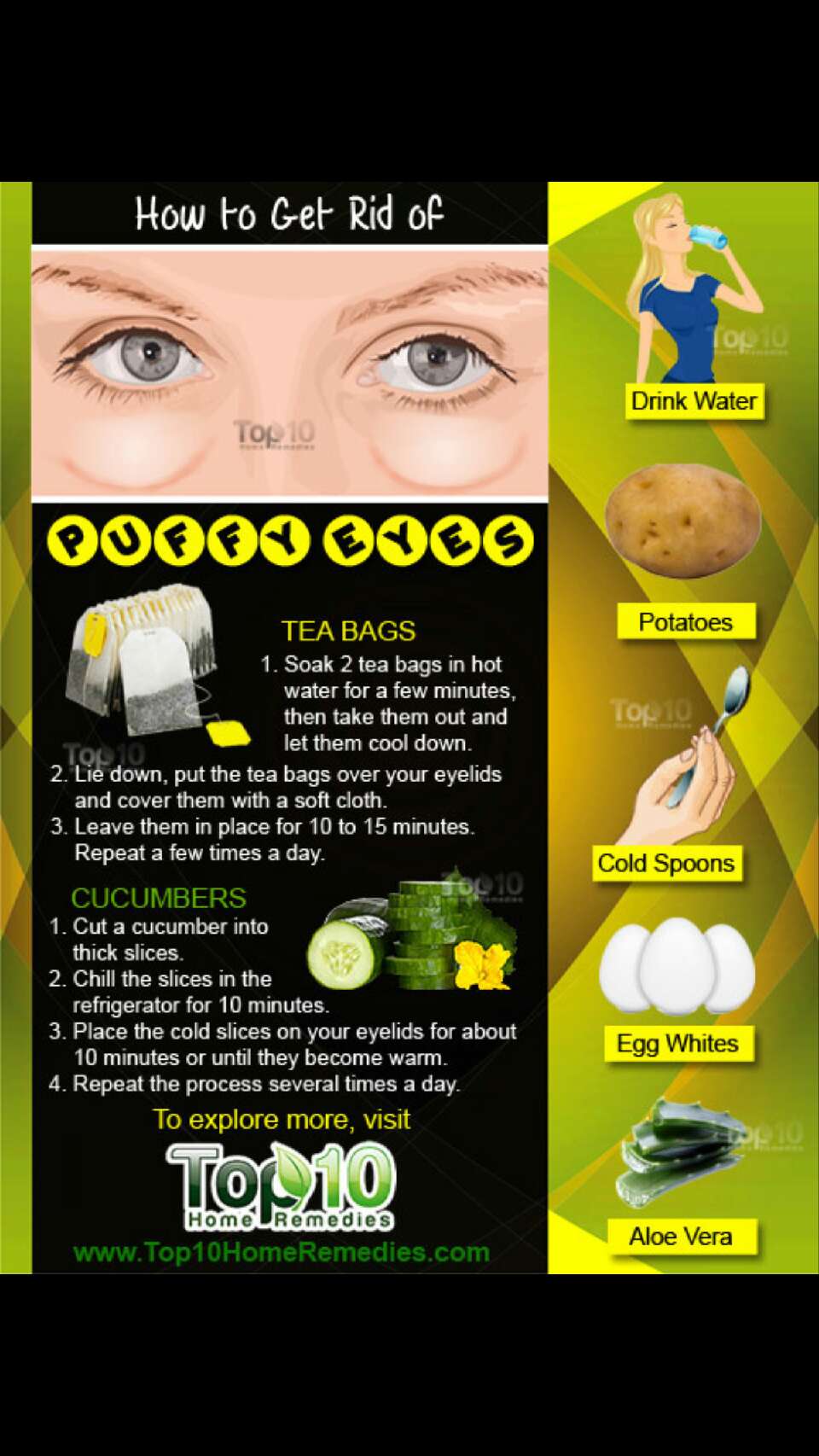 Severe swelling and breathing problems may be signs of anaphylaxis, a life threatening condition that needs emergency medical care.
Severe swelling and breathing problems may be signs of anaphylaxis, a life threatening condition that needs emergency medical care.
Anaphylaxis is a severe allergic reaction that can be life threatening. The symptoms develop suddenly and include:
- hives
- swelling of the face or mouth
- wheezing
- fast, shallow breathing
- a fast heart rate
- clammy skin
- anxiety or confusion
- dizziness
- vomiting
- blue or white lips
- fainting or loss of consciousness
If someone has these symptoms:
- Check whether they are carrying an epinephrine pen. If they are, follow the instructions on the side of the pen to use it.
- Dial 911 or the number of the nearest emergency department.
- Lay the person down from a standing position. If they have vomited, turn them onto their side.
- Stay with them until the emergency services arrive.
Some people may need more than one epinephrine injection.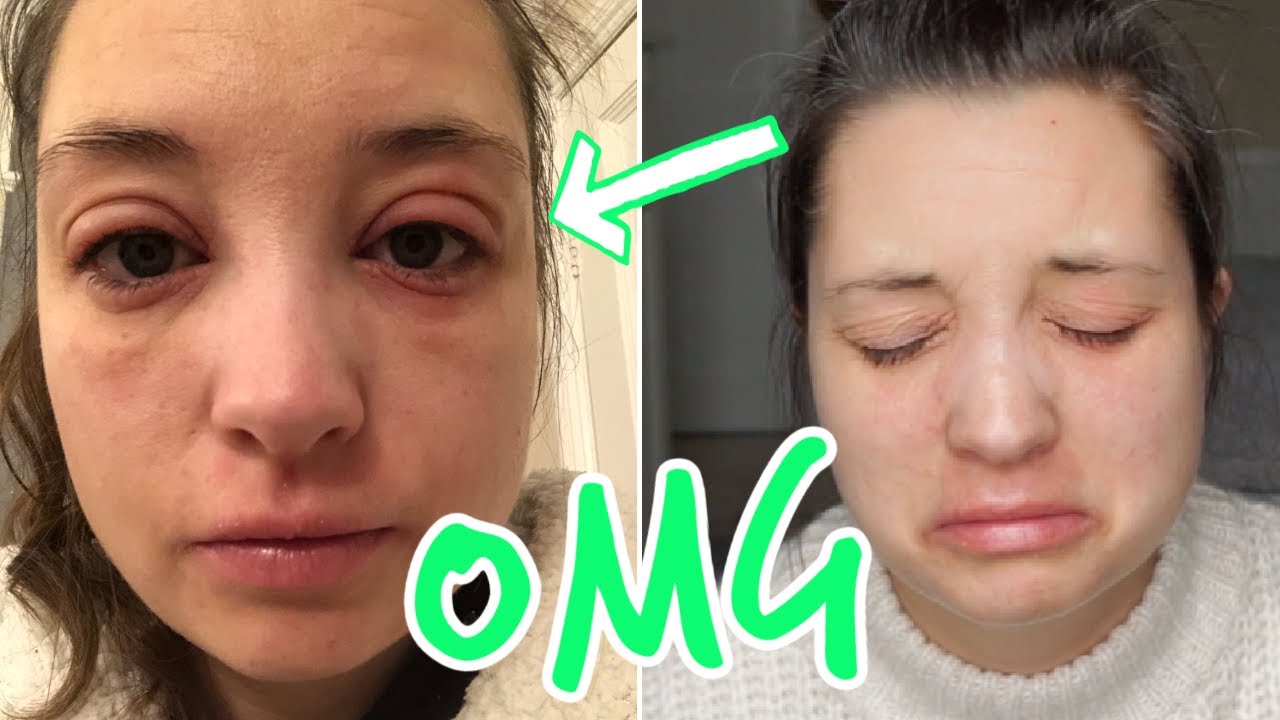 If the symptoms do not improve in 5–15 minutes, or they come back, use a second pen if the person has one.
If the symptoms do not improve in 5–15 minutes, or they come back, use a second pen if the person has one.
Was this helpful?
A person may have “bags under the eyes” for many reasons, including genetic factors. However, a lack of sleep and fatigue can make them appear more pronounced.
Treatment
Applying a cold compress while sitting upright may help relieve symptoms.
Prevention
The following tips may help prevent puffy eyes after sleeping:
- getting enough sleep
- sleeping with the head slightly raised
- limiting salt intake in the diet
- avoiding drinking liquids before sleeping
- quitting or avoiding smoking
Water retention overnight can also affect the eyelids. It can make them look swollen and puffy in the morning, particularly after not sleeping well.
Peripheral edema happens when the body is unable to remove fluid from parts of the body such as the hands, feet, and eyelids. Periorbital edema is when fluid collects around the eyes.
It can be a sign of many health conditions, such as:
- thyroid problems
- kidney or liver disease
- heart failure
- obstructive sleep apnea
- lymphedema
- the use of some drugs
Anyone who has concerned about fluid retention in the eyelids or elsewhere should seek medical advice.
Treatment
Treatment will depend on the cause but may include diuretics, pills that help the body remove fluid.
Prevention
It is not always possible to prevent fluid retention, but here are some ways of reducing the risk of heart disease and other conditions that can cause it:
- following a varied diet with plenty of fruits and vegetables
- limiting salt intake
- having regular exercise
- seeking medical help if symptoms arise that could indicate a problem
- following a doctor’s advice on treatment
Crying can lead to puffiness around the eyes.
The eyes produce tears:
- to lubricate the cornea
- to wash away irritants, for example, dust or onion fumes
- in response to emotional triggers, such as joy or sadness
If the person produces a lot of tears, the lacrimal drainage system, which usually absorbs them, may be unable to cope. This can lead to puffiness.
This can lead to puffiness.
Treatment
A cool compress may help soothe discomfort after crying.
Prevention
If a person finds they are crying more than usual or if crying or sadness is affecting their daily life, they may wish to seek medical advice.
Counseling can help manage depression, grief, anxiety, and other emotional factors that can lead to crying.
Here, learn more about puffy eyes from crying and what to do if they happen.
Makeup and skin care products can cause irritation, swelling, and puffiness in the eyelids for many reasons, for instance, if:
- they contain allergens or irritants
- the person does not remove them before sleeping
- products are not suitable for use around the eyes
- bacteria have developed over time, for example, on mascara
Treatment
Artificial tears can help soothe discomfort, if swelling occurs when using cosmetics.
A person should seek medical advice if symptoms continue or worsen.
Prevention
To prevent inflammation due to cosmetics, a person should:
- take care to avoid contact between makeup and the eyes
- monitor for sensitivity reactions and introduce new products one at a time
- remove all makeup before sleeping
- choose good quality makeup that is fragrance-free
- replace all eye makeup every 3 months
- avoid sharing products with other people
What is toxic makeup?
Orbital cellulitis is a serious infection that occurs in the bony eye socket, known as the orbit. The most common cause is a bacterial infection of the nasal and sinus passages, or rhinosinusitis. But, it can result from surgery, an immune problem, and other causes.
It can lead to:
- swelling
- redness
- pain, especially with eye movement
- paralysis of the muscles that control the eye
It is essential to seek medical help as soon as symptoms appear. Complications include abscesses, vision loss, and a spread of infection to other areas.
Treatment
A doctor will prescribe antibiotics, possibly for 2–3 weeks or longer.
If an abscess develops and causes severe symptoms, a person may need surgery.
Prevention
People can reduce the risk of severe bacterial infections and their complications by:
- washing their hands regularly
- staying away from other people who have an infection
- seeking help as soon as the symptoms of infection appear, such as a fever
Graves’ disease is an autoimmune disorder that affects the thyroid gland. It can impact the skin, the eyes, and other organs.
Eye symptoms include:
- swollen eyelids
- eye pain
- redness in the conjunctiva
- double vision
- eyelid retraction, where it seems that the eyelids are pulled back
Treatment
Treatment for eye problems related to Graves’ disease will depend on the severity.
They include:
- oral steroids
- other medications, such as rituximab, a monoclonal antibody
- artificial tears
- focal radiation therapy for the eye socket
- surgery, in some cases
Prevention
Factors that may increase the risk of Graves’ disease are:
- a family history of the disease
- smoking
- stress
- infection
- exposure to iodine
- having given birth
- receiving highly active antiretroviral therapy, a treatment for some immune conditions
Quitting smoking may help reduce the risk.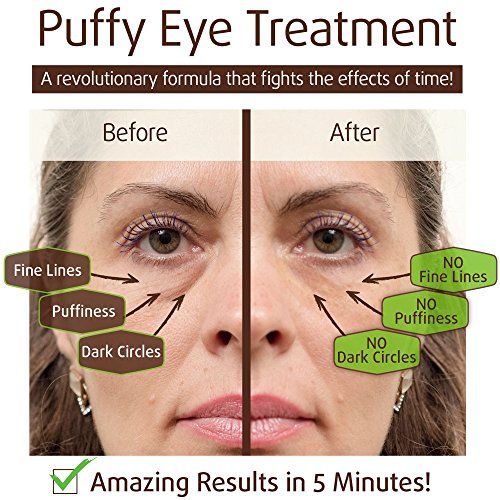
There are many types of herpes virus, and some can cause infections in the eye. Ocular herpes simplex can lead to various eye infections with a range of symptoms.
These can affect the eyelids and other parts of the eye and include:
- irritation and redness
- inflammation of the cornea, the outer cover of the eye
- ulcers of the conjunctiva and cornea
- loss of sensation in the cornea
An initial infection often occurs in children under 5 years of age, but the virus remains in the body and symptoms can recur later.
Treatment
A doctor will take an eye swab to check for the herpes virus.
They may prescribe:
- eyedrops containing antibiotics, steroids, or both
- intravenous medication, in some cases
- lubricating eye drops to help manage dry eye
- antiretroviral therapy to prevent recurrences and complications
- surgery, in some cases
Prevention
The herpes simplex virus is very common, and infection is hard to prevent.
Adults can help protect newborns by avoiding kissing them on the mouth.
Some people may need long-term antiretroviral drugs to manage the virus and help prevent a recurrence.
Blepharitis is an inflammation of the margins of the eyelids. It can result from a bacterial or viral infection or exposure to an allergen. Some people experience it only once, but it is usually a long-term condition in which symptoms improve and then flare up again.
Blepharitis can affect the eyelids in the following ways:
- inflammation
- burning
- itching
- crusting
- ulceration, in some cases
- dandruff-like flakes around their eyelashes
- blurred vision
- feeling that something is in the eye
- loss of eyelashes
Treatment
A person should do the following two to four times per day during a flare to keep the eyelids clean:
- Apply warm, wet compresses to the eyes for 5–10 minutes to soften debris and dilate the oil glands that line the eyelids.

- Wash the eyelid margins gently with a cotton bud soaked in water with a little baby shampoo.
- Gently massage the eyelids, making circular movements with a cotton bud or fingertip, to stimulate the oil glands.
A doctor may also recommend:
- antibiotic cream to apply to the eyelid
- topical steroids
- a tea tree oil eyelid scrub
- newer therapies, such as pulsation therapy, which uses heat to help remove debris from the oil glands
Prevention
It is not always possible to avoid blepharitis.
Options include:
- avoiding triggers that cause or worsen symptoms
- limiting the use of makeup
- regularly carrying out the hygiene steps above to prevent recurrence in people with chronic blepharitis
When a tear duct is blocked, the eye cannot fully drain tears. According to the American Academy of Ophthalmology, 20% of newborns have a blocked tear duct, but it usually resolves in 4–6 months. In adults, it may stem from an infection, tumor, injury, or other cause.
In adults, it may stem from an infection, tumor, injury, or other cause.
Symptoms include:
- inflammation, especially in the inner corner of the eye
- discharge
- crusty eyelashes
- blurred vision
- traces of blood in tears
- a fever
- frequent infections
Treatment
Often, a blocked duct will open without intervention.
For a newborn, a doctor may teach a caregiver how to do a special massage to encourage the duct to open.
If the duct does not open, a brief duct probing procedure may be necessary to restore drainage.
Prevention
It is not possible to prevent a blocked tear duct. However, if symptoms worsen or there are signs of an infection, such as a fever, they should seek medical help.
Conjunctivitis, or pink eye, is an inflammation of the conjunctiva. This is the clear, thin tissue that lines the eyelid and eyeball.
Possible causes include:
- a viral, bacterial, or fungal infection
- an allergic or sensitivity reaction
- exposure to toxins or irritants
A person may notice:
- swollen eyelids
- a pink or red eyeball
- itching
- pain
- discharge
Treatment
Conjunctivitis usually resolves in 1–2 weeks but may take longer. Some people have chronic conjunctivitis, which lasts longer than 4 weeks.
Some people have chronic conjunctivitis, which lasts longer than 4 weeks.
Tips for managing pink eye at home include:
- applying cold compresses to relieve discomfort
- using artificial tears
- keeping the eye clean and free of makeup
- avoiding rubbing or touching the eye
- washing the hands frequently to prevent the spread of the infection
The person should see a doctor if:
- symptoms get worse
- the pain becomes severe
- pink eye does not clear up in 2 weeks
The doctor may prescribe:
- antibiotic drops or ointments, in the case of a bacterial infection
- antiviral therapy, in some cases
- topical antihistamines, if it is due to an allergy or irritant
Prevention
Here are some tips for preventing conjunctivitis and other eye infections:
- avoiding touching the eyes, and washing the hands first if it is necessary
- replacing all eye makeup after 3 months
- avoiding sharing makeup and personal items, such as towels, with other people
Here are some questions people often ask about a swollen eyelid.
When should a person see a doctor for a swollen eyelid?
People should see a doctor if they have a fever or signs of an infection, if there is pain when shifting eye gaze, if symptoms are severe or worsening, if symptoms persist longer than 48-72 hours, or if their vision has changed.
How do you treat a swollen eyelid?
The treatment will depend on the cause. A doctor can advise on a suitable approach.
Is a warm or cold compress better?
In some cases, such as after crying or having an allergic reaction, a cool compress wrapped in a cloth may help reduce swelling. Other conditions, such as a chalazion, may benefit from a warm compress.
A swollen eyelid can happen for many reasons, ranging from tiredness to an infection. If symptoms are severe, persistent, or could indicate an infection, the person should seek medical help.
Some eye conditions can lead to severe complications, including vision loss.
If a person is unsure, they should never hesitate to seek medical consultation to protect their health.
Read the article in Spanish
Why the eyelid is swollen and what to do about it
Likbez
Health
July 11, 2021
Sometimes an ice cube is enough, and sometimes the treatment is delayed for a long time.
You can listen to the article. If it’s more convenient for you, turn on the podcast.
Swollen eyelid means the development of swelling or inflammation in the tissues. It can happen suddenly or acutely, and in some people the condition becomes chronic and recurs periodically. We have collected the most likely causes of swollen eyelids.
Crying
Eyelids swell if a person has cried for a long time. Other symptoms usually do not appear.
What to do
You definitely don’t need a doctor’s help in this situation. If you want the swelling to pass faster, you can apply a cool compress or a piece of ice to your eyes.
Injury
Even a slight injury to the eyelid can lead to swelling. Sometimes inflammation increases due to microbes on the skin.
Sometimes inflammation increases due to microbes on the skin.
What to do
If a person has injured an eyelid, the wound should be washed with running water. Then it is better to seek help from a doctor. He will suggest an antiseptic for eye treatment.
Insect bite
If a mosquito or midge stings the eyelid, swelling, itching and redness may occur.
What to do
If the pain is severe, you can take an over-the-counter pain reliever and an allergy medication to reduce itching and inflammation. And a cold compress or an ice pack will help get rid of the swelling faster. If the tumor does not go away or becomes larger, you should consult a doctor. He might prescribe steroid pills.
Allergy
It can be caused by cosmetics, plant pollen, wool or food. The eyelids swell due to an allergic reaction. Sometimes swelling also appears on the lips, in the throat, and red rashes appear on the body.
What to do
If you have experienced allergies in the past, you should take an allergy medicine recommended by your doctor. If such a reaction arose for the first time, it is urgent to contact a therapist or an allergist. The specialist will select the appropriate antihistamine medication, and later prescribe an examination to find the cause of the pathology.
If such a reaction arose for the first time, it is urgent to contact a therapist or an allergist. The specialist will select the appropriate antihistamine medication, and later prescribe an examination to find the cause of the pathology.
Bacterial and parasitic infection
Sometimes the eyelids become swollen due to microbes such as staphylococcus, as well as skin parasites such as demodex mites and pubic lice.
If the infection has penetrated into the hair follicle of the eyelash, then its inflammation, or barley, develops. In this case, swelling is noticeable only in one eye.
It happens that the duct of the sebaceous gland is clogged in a person, and microbes multiply inside. This is called a chalazion. Then the affected eyelid swells and turns red.
What to do
To get rid of inflammation, doctors recommend:
- Thorough hygiene. Wash eyes and eyelids regularly. To do this, you can use baby shampoo without tears.

- Warm compresses. Should be done 1-2 times a day for 5-10 minutes with a cloth soaked in warm water. This is necessary to clean the eyelids and eyelashes from crusts.
- Antibiotics. Usually prescribed as an ointment, but in severe cases, tablets are recommended.
- Omega-3 fatty acids. You can take them as tablets or increase the amount of foods with these fats in your diet.
- Steroid drugs. Given as an ointment or cream to reduce swelling.
- Immunosuppressants. Your doctor may recommend drops to reduce inflammation.
- Tea tree oil. Some experts suggest using it as a scrub against demodex.
Viral infection
Sometimes swelling occurs due to molluscum contagiosum. When infected, a small pink bump with a smooth, shiny surface appears on the skin. It does not hurt, but sometimes redness develops around.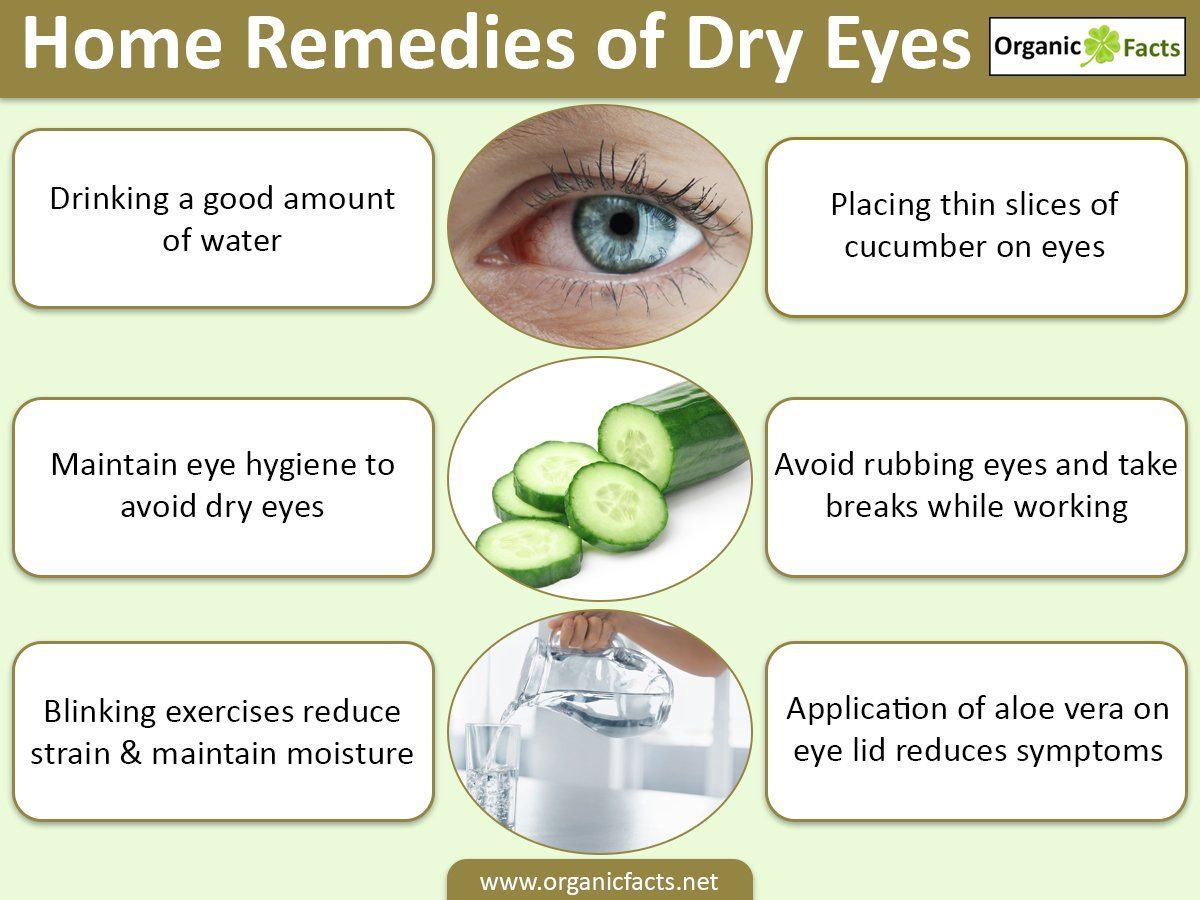
Eyelids can also swell if they are infected with the herpes virus.
What to do
Molluscum contagiosum will not go away on its own and can spread to nearby skin. Therefore, it is recommended to remove it, and then take medications that stimulate the immune system and prevent the disease from returning.
For herpes virus, antiviral drugs in ointments or tablets should be used.
Rosacea
This disease manifests itself in the form of pink-red spots on the skin, ulcers, enlarged nose. The cause of the pathology is not exactly known, although it is assumed that heredity is to blame, and other factors provoke exacerbations. For example, these are:
- sun, wind;
- hot or spicy food;
- alcohol;
- emotional stress;
- playing sports;
- vasodilators;
- cosmetics.
Rosacea often affects the eyes. They become dry, irritated, and the eyelids swell and redden.
What to do
Acne medications, topical antibiotics or tablets are prescribed for treatment. But these methods are not always effective and the problem can persist for a long time.
But these methods are not always effective and the problem can persist for a long time.
Seborrheic dermatitis
Immune disease, when a person develops red, scaly patches on areas of the body rich in subcutaneous fat, which are very itchy. And then a fungal infection joins these foci. Seborrheic dermatitis is a fairly common disease, the mildest form of which is dandruff in the hair. But sometimes large lesions from the head can spread to the eyelids. And since they have a lot of subcutaneous tissue, it swells easily.
What to do
Seborrheic dermatitis is difficult to treat. Doctors may prescribe hormonal creams and ointments, as well as fungal remedies. Sometimes they even use immunosuppressants, which suppress the activity of immune cells and reduce inflammation.
Chemical irritation
If smoke, chemical fumes or any irritating substance comes into contact with the eyes, it may cause puffiness of the eyelids.
What to do
Flush eyes with running water. If after a few minutes it does not get better, you should consult an ophthalmologist.
If after a few minutes it does not get better, you should consult an ophthalmologist.
Sjögren’s syndrome
This is a chronic inflammatory disease that affects the muscles, lungs, joints and kidneys, and immune cells accumulate in many tissues. The work of exocrine glands, which should moisturize the skin and mucous membranes, is disrupted, so the disease is often accompanied by dry eyes and swollen eyelids.
What to do
Doctors prescribe treatments that help relieve symptoms. You may need cytostatics, immunosuppressants and steroid hormones. And to eliminate dry eyes, you need drops, special contact lenses or glasses with a moisturizing chamber.
Read also 🧐
- What to do if your eyes hurt
- Conjunctivitis: why your eyes turn red and how to treat them
- How to reduce eye strain if you constantly work at a computer
- How to protect your eyes from overexertion
- How to get rid of bruises under the eyes?
*Activities of Meta Platforms Inc. and its social networks Facebook and Instagram are prohibited in the territory of the Russian Federation.
and its social networks Facebook and Instagram are prohibited in the territory of the Russian Federation.
What to do if the eyelid above the eye is swollen
The occurrence of swelling of the eye and eyelid can be caused by various reasons. Sometimes they are relatively harmless, such as drinking large amounts of fluid before bed. But there are more serious reasons for which swelling of the eyelids indicates the presence of allergies or inflammatory processes. We will tell you more in our article.
Most common causes of edema
Swollen and sore eyes – what are the reasons? The most common causes of eye pain and eyelid swelling are:
In this article
- The most common causes of swelling
- What to do if the eyelid above the eye is swollen due to stye
- If the eyelid above the eye is swollen due to dacryocystitis
- Swollen eyelid due to allergy
- Swollen eyelid with a cold: what to do
- Swollen eyelid due to diseases: how to treat
- Traditional methods of eliminating edema
- barley;
- chalazion;
- dacryocystitis;
- kidney problems;
- no sleep mode;
- pathologies in the cardiovascular system;
- eye injuries;
- allergic reactions.

What to do if the eyelid above the eye is swollen due to stye
The meibomian gland is responsible for producing the fat needed to build the tear film. Its blockage leads to inflammation and the appearance of barley on one eyelid, less often on two at once. It can appear both on the lower and upper eyelids. The disease is well treated at home. However, a preliminary consultation with a specialist still does not hurt.
So, the eye is swollen due to barley: what to do? There are many popular methods of getting rid of this problem. All of them boil down to warming up the eyelid, which is swollen. Usually this is done with a boiled egg or paraffin, but these methods are dangerous and ineffective. From heat, the infection can spread even further and lead to the development of serious complications.
It is necessary to treat an eyelid that is swollen, reddened and sore with the help of ointments with an antibacterial effect. They are applied to the eyelid and laid under it. It is important to observe hand and face hygiene: otherwise, the infection will not be defeated.
They are applied to the eyelid and laid under it. It is important to observe hand and face hygiene: otherwise, the infection will not be defeated.
Often barley is accompanied by blepharitis – inflammation of the edges of the eyelids. To prevent its development, you need to wipe the edges of the eyelids with a special lotion.
How to treat chalazion
Swollen and sore eyelid above the eye? The cause may be a chalazion. This disease can occur on both eyelids at once. It is often confused with barley, but there is one difference: with chalazion, pus is hard, so this disease is treated much longer and more difficult. The causes of development can be infectious and bacterial.
The disease is treated with medication or surgery. If there is no increase and inflammation of the tumor, the eyelids can be lubricated with ointments, such as “Floxal”. In any case, the treatment process will not be quick: on average, it takes from 2 to 4 months.
If the eyelid above the eye is swollen due to dacryocystitis
With dacryocystitis, a pea-shaped tumor appears on the eyelids, which hurts a lot. In this case, body temperature may rise and lacrimation may occur. In some cases, the disease manifests itself in the form of a slightly swollen eyelid and copious discharge of tears. It usually develops in only one eye. Often dacryocystitis occurs in newborns.
If the eyelid above the eye hurts and there are other symptoms of the disease, you should go to the doctor, who will prescribe treatment with antibacterial drugs or make a piercing. The latter must be performed strictly under medical conditions. To eliminate the infection, antibiotics are prescribed in the form of drops, ointments or injections.
Swollen eyelid due to allergy
If the eyelid is swollen due to an allergy, then first of all it is necessary to identify its source and exclude it.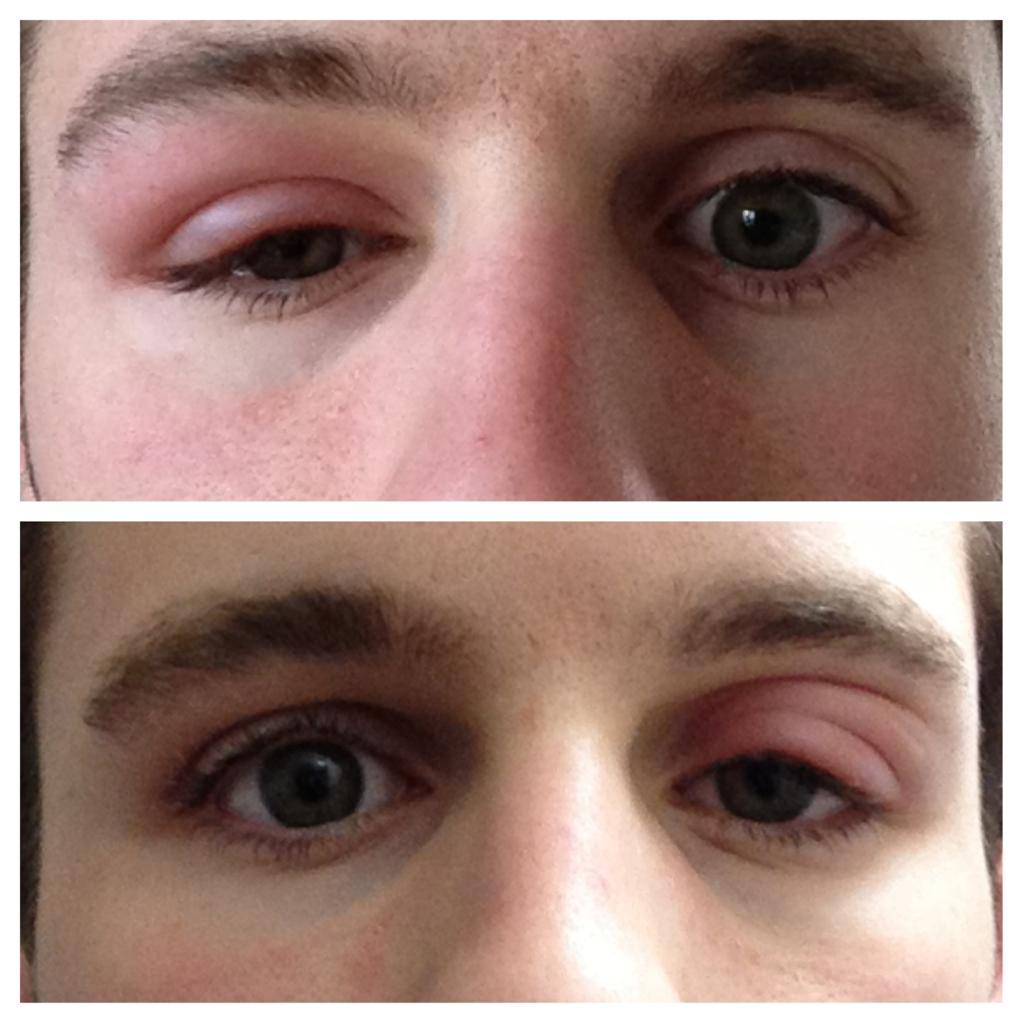 In cases where the reaction was provoked by a food or drug, an adsorbent, such as activated charcoal, should be taken. It is also worth drinking more clean water, which will help to quickly remove the allergen from the body.
In cases where the reaction was provoked by a food or drug, an adsorbent, such as activated charcoal, should be taken. It is also worth drinking more clean water, which will help to quickly remove the allergen from the body.
If the eye hurts and is swollen due to cosmetics, you need to stop using this remedy, and for the period of treatment – and all cosmetics in general. If the cause of the reaction is dust or animal hair, you need to perform wet cleaning and ventilate the room.
In all cases, it is important to follow the rules of hygiene and avoid contact with the allergen in the future.
If these measures were not enough and the eye still hurts, you need to consult an ophthalmologist. He will select the means that will alleviate the patient’s condition. Antiallergic drugs can be in the form of drops or tablets. Vasoconstrictor drops, for example, Vizin, will help relieve puffiness. If the swelling is rapidly progressing, do not waste time, you should immediately call an ambulance.
Swollen eyelid due to a cold: what to do
A swollen eyelid above the eye can also be due to sinusitis or other inflammation in the sinuses. Swelling of the sinuses and the sputum present in them put pressure on the eyes, while microorganisms pass to the organs of vision.
Treatment of eyelid edema is to get rid of the underlying disease. When secondary infections are attached, the use of antimicrobial drops, such as Sulfacil, is prescribed. It can be used not only for treatment, but also for prevention.
Swollen eyelid due to diseases: how to treat it
Often the reason that the eyelid above the eye is swollen and reddened is conjunctivitis. In this case, the main task is to remove pus from the eye. If conjunctivitis is provoked by viruses, then eye drops are prescribed with Aktipol or Ophthalmoferon. If bacteria are the cause, Floxal or Ciprofloxacin drops are used.
In the presence of inflammation in the lacrimal glands, the patient is placed in a hospital. As part of the treatment use:
As part of the treatment use:
- “Tavegil”, which relieves swelling;
- analgesics for pain relief;
- physiotherapy;
- lacrimal points massage.
A disease such as meibomite (inflammation in the meibomian glands) is eliminated with anti-inflammatory drugs that have an antibacterial effect: Ceftriaxone, Levomycetin. In addition to this, a specialist may recommend the use of hydrocortisone ointment.
If the eyelid is swollen as a result of an injury
Edema provoked by a blow or any other eye injury is eliminated as follows. First of all, the eye must be washed and treated with an antiseptic. Then a cold compress is applied to it, while avoiding pressure on the eyeball. After that, a sterile bandage is applied to the eye.
You can not rub the swollen eye and touch it with your hands. If there are wounds, then it is also worth refraining from washing the eye: the chemical solution should not get inside.
Eyelid hurts and swollen due to oncology
In this case, the situation is much more serious, so the doctor determines the treatment methods. Delays can cost lives, it is not worth trying to get rid of the problem on your own.
The most common methods of treatment are:
- cryodestruction: it consists in the treatment of affected tissues with liquid nitrogen, which contributes to the disintegration of the focus of infection and the removal of affected tissues;
- operation: during it, the cancerous tumor is cut off along with a thin layer of healthy tissue; often followed by blepharoplasty.
If the disease was diagnosed late or the tumor moved to the internal cavity, then except for the surgical method, it is impossible to get rid of oncology. If the tumor is inoperable, it is removed with radiation or chemotherapy.
Folk methods to eliminate edema
If the eyelids are swollen not due to injuries and diseases of the eyes, but as a result of lack of sleep or an excess of salty foods in the diet, then you can get rid of this unpleasant phenomenon using folk methods.


